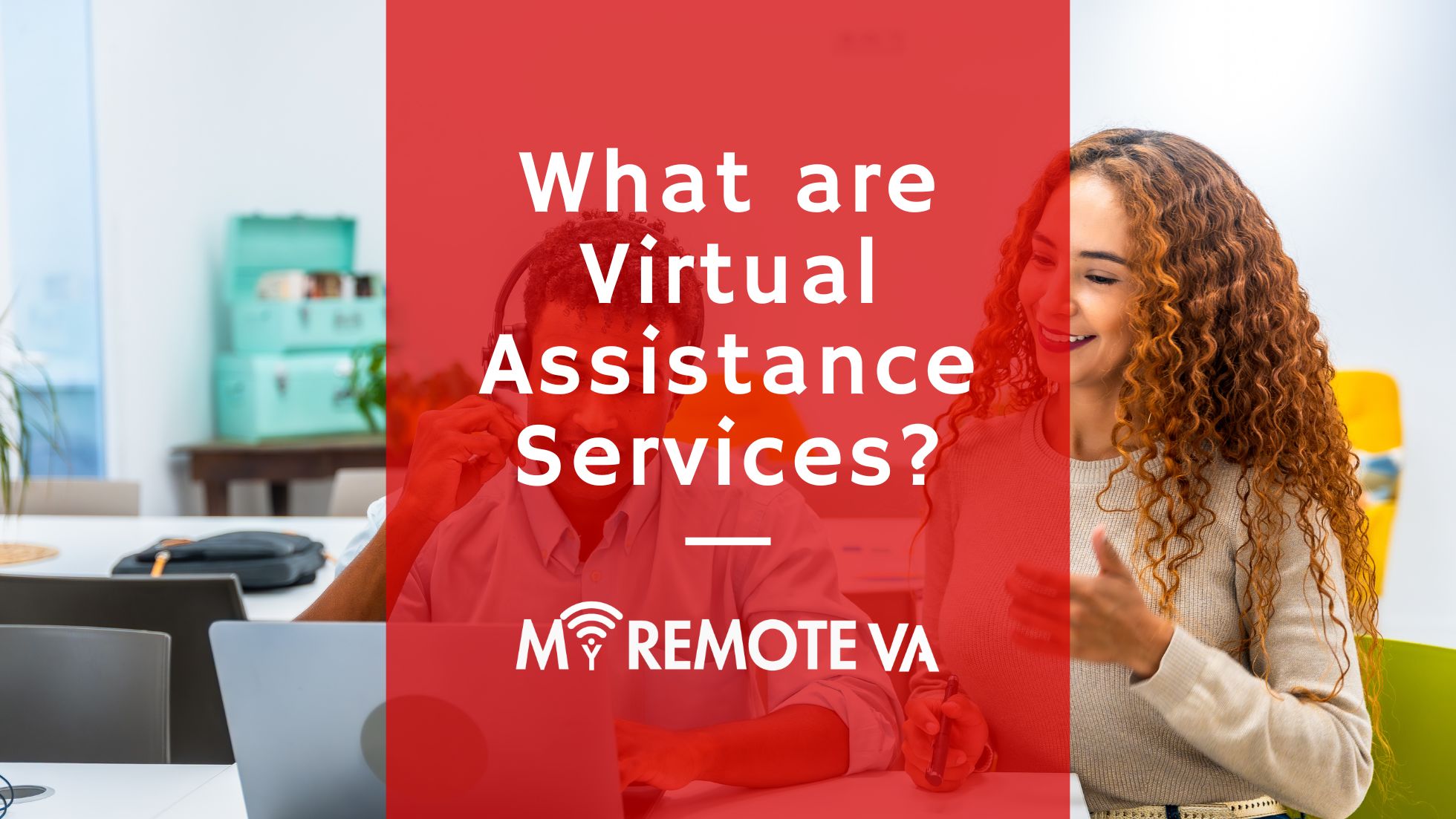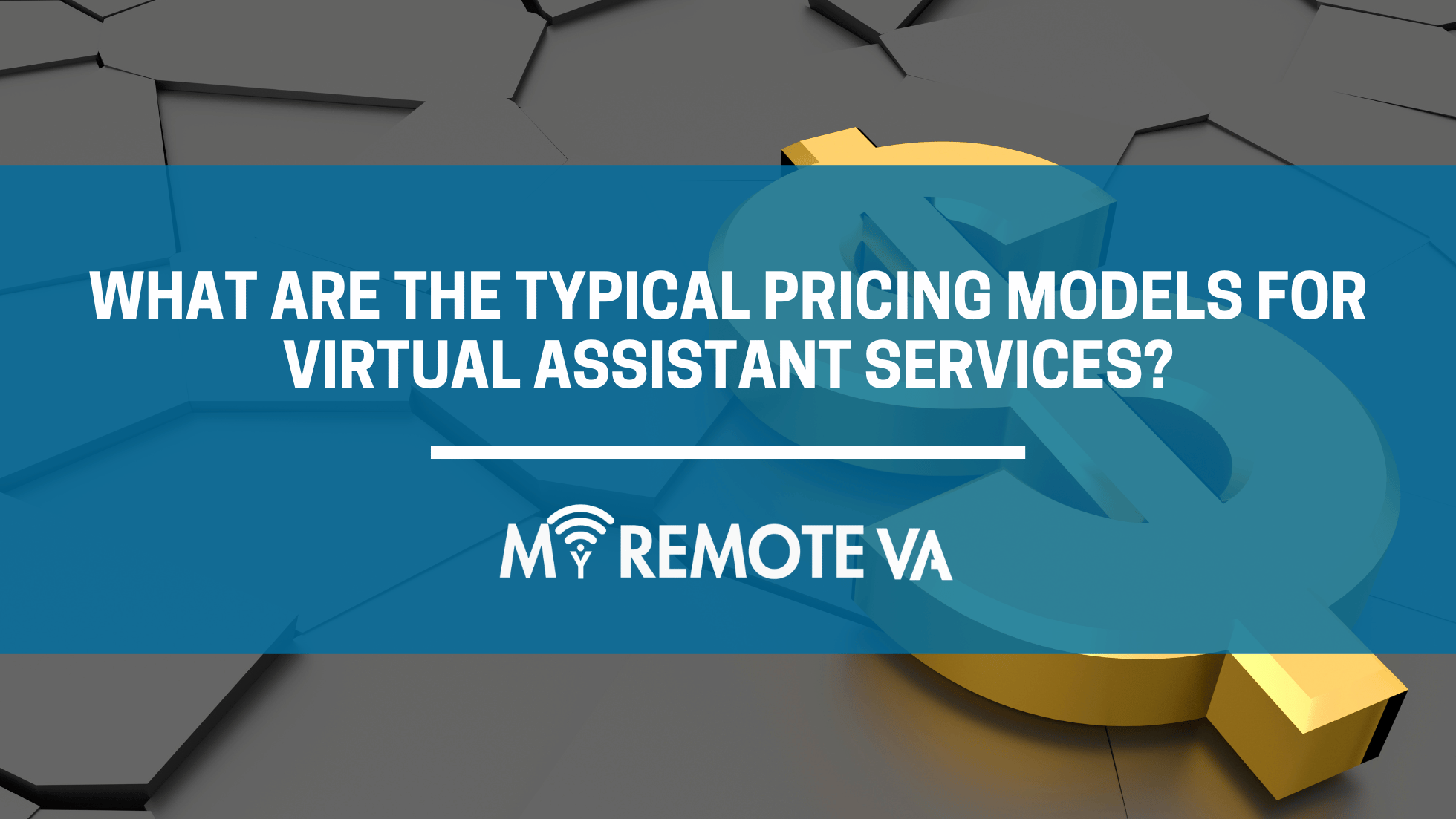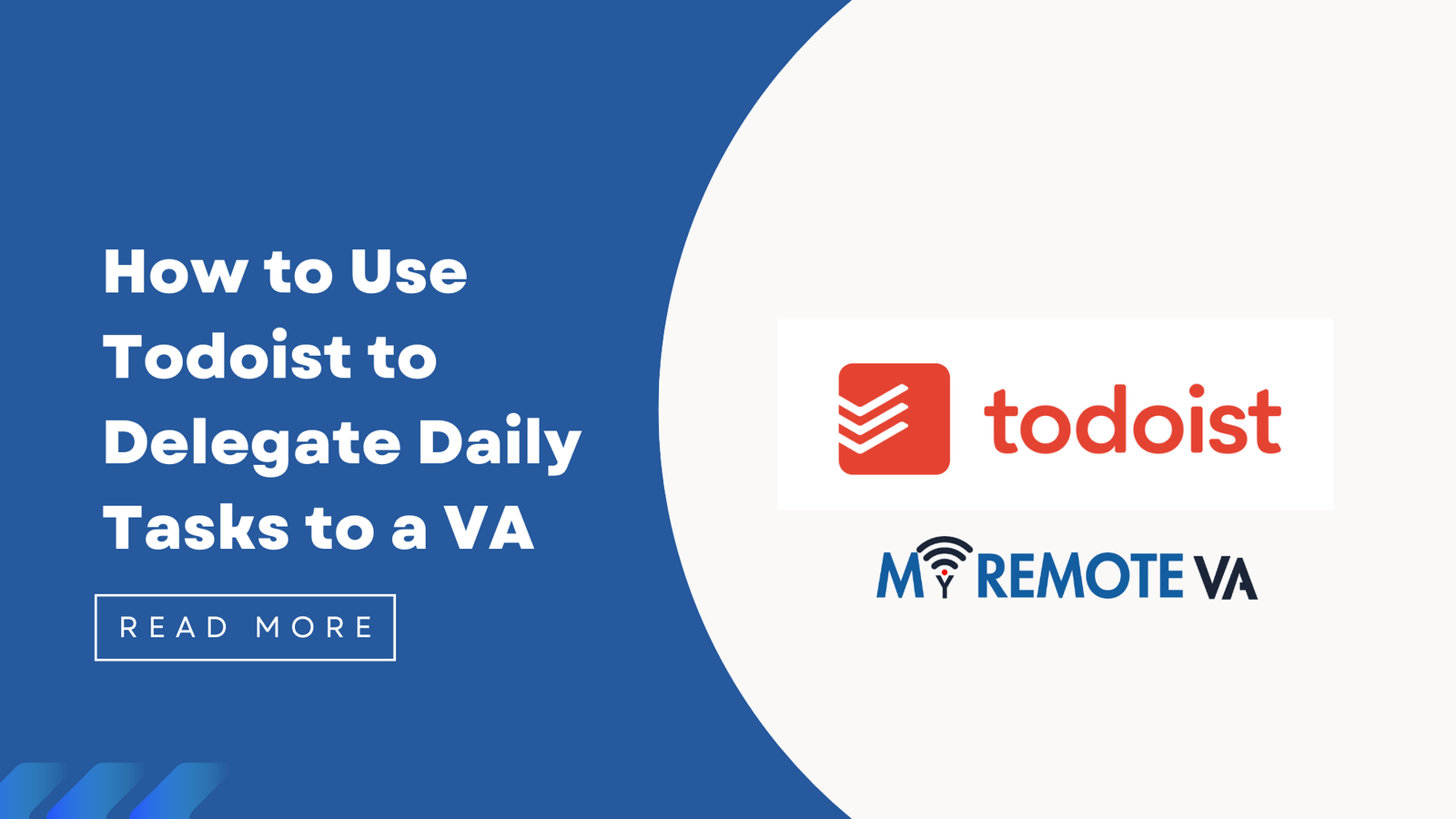What are Virtual Assistance Services?
Virtual assistance services provide expert support to startups, founders, agencies, and busy professionals. They offer a flexible way to delegate tasks and free up valuable time, allowing you to focus on core business activities.
- What are Virtual Assistance Services?
- Defining Virtual Assistance
- Key Services Offered by Virtual Assistants
- Benefits of Using Virtual Assistance Services
- Recent Market Signals (USA, UK, New Zealand, Singapore, Australia, UAE - Last Month)
- Choosing the Right Virtual Assistant
- FAQ: Virtual Assistance Services
- What is the Average Cost of a Virtual Assistant?
- How Do I Pay a Virtual Assistant?
- What Tools Do Virtual Assistants Typically Use?
- How can I ensure the security of my data when working with a virtual assistant?
- How do I manage a virtual assistant effectively?
- Are virtual assistants employees or independent contractors?
- What if I'm not happy with the services provided by a virtual assistant?
Essentially, you gain access to skilled professionals who work remotely to handle a wide range of responsibilities. Instead of hiring full-time employees, you leverage virtual assistants (VAs) on an as-needed basis, which can be significantly more cost-effective.
What Tasks Can a Virtual Assistant Handle?
The scope of tasks a virtual assistant can handle is broad, encompassing areas such as:
- Administrative Tasks: Managing calendars, scheduling appointments, handling emails, data entry, and travel arrangements.
- Technical Tasks: Website maintenance, software troubleshooting, basic IT support.
- Customer Support: Answering inquiries, resolving customer issues, providing product information.
- Marketing Tasks: Social media management, content creation, email marketing campaigns.
- Creative Tasks: Graphic design, video editing, copywriting.
- Executive Tasks: Research, report writing, project management.
Virtual Assistant Service Plans
Virtual assistance services often offer a range of plans to suit different needs and budgets. These can include hourly plans, dedicated plans, and even free trial options. For example, some services offer curated Hourly Monthly Plans of 5, 10, 20, or 30 hours. Others provide Dedicated Plans for 80 or 160 hours, or multi-VA setups.
A key benefit of using a virtual assistance service is the level of support provided. Many services offer a Dedicated Supervisor who manages your VA, shift, processes, and reporting, freeing you from the day-to-day management of your virtual team.
Defining Virtual Assistance
Virtual assistance services provide remote professional support to individuals, businesses, and organizations. Think of it as having an on-demand assistant, but without the overhead of a traditional employee. These services offer flexibility and scalability, allowing clients to delegate tasks and responsibilities to skilled professionals working remotely.
What Types of Tasks Can a Virtual Assistant Handle?
The scope of virtual assistance services is incredibly broad. It can encompass a wide array of tasks, depending on the VA’s expertise and the client’s needs. These tasks often fall into categories such as:
- Administrative Support: Managing calendars, scheduling appointments, handling email correspondence, data entry, and general office tasks.
- Technical Support: Website maintenance, troubleshooting technical issues, managing software updates, and providing IT support.
- Customer Support: Answering customer inquiries, resolving complaints, providing product information, and managing customer relationships.
- Marketing Assistance: Managing social media accounts, creating content, running email marketing campaigns, and conducting market research.
- Creative Tasks: Graphic design, video editing, copywriting, and website design.
- Executive Support: Managing projects, conducting research, preparing presentations, and providing personal assistance to executives.
Benefits of Using Virtual Assistance Services
Engaging a virtual assistant offers several advantages, making it an attractive option for startups, busy professionals, and growing businesses. Some of the key benefits include:
- Cost Savings: Reduce overhead costs associated with hiring full-time employees, such as salaries, benefits, and office space.
- Increased Productivity: Free up your time to focus on core business activities by delegating time-consuming tasks.
- Access to Specialized Skills: Tap into a pool of skilled professionals with expertise in various fields.
- Flexibility and Scalability: Adjust your level of support as needed, scaling up or down based on your workload.
- Improved Work-Life Balance: Reduce stress and improve your work-life balance by delegating tasks and responsibilities.
By understanding the definition and scope of virtual assistance services, individuals and businesses can make informed decisions about whether this approach aligns with their specific needs and goals.
Key Services Offered by Virtual Assistants
Virtual assistants (VAs) provide a wide array of services, enabling individuals and businesses to delegate tasks and free up valuable time. Their expertise spans multiple domains, offering flexible support tailored to specific needs. From administrative tasks to specialized project management, VAs act as extensions of your team, delivering efficient and cost-effective solutions.
Administrative Support
Administrative tasks often consume significant time. Virtual assistants can handle these duties efficiently, including:
- Calendar management and scheduling
- Email management and inbox organization
- Data entry and record keeping
- Travel arrangements and itinerary planning
Technical Support
For businesses needing IT or technical assistance, virtual assistants can provide:
- Website maintenance and updates
- Basic troubleshooting and technical support
- Software setup and configuration
Customer Support
Maintaining excellent customer service is crucial. VAs can help by:
- Answering customer inquiries via email, chat, or phone
- Providing product or service information
- Processing orders and handling returns
- Managing customer feedback and reviews
Marketing Assistance
Virtual assistants play a role in marketing, including:
- Social media management and content creation
- Email marketing campaign setup and execution
- SEO optimization and keyword research
- Content writing and blogging
Creative Tasks
For businesses needing support with design and content, VAs can provide:
- Graphic design for social media and marketing materials
- Video editing and production
- Presentation design
Executive Assistance
High-level executive support is crucial for busy professionals. VAs can manage
- Personal tasks and errands
- Meeting preparation and follow-up
- Research and report creation
Many virtual assistant services offer flexible engagement models. Clients can often choose from hourly plans, monthly retainers, or project-based arrangements. This allows businesses to scale their support as needed, only paying for the services they require.
Benefits of Using Virtual Assistance Services
Virtual assistance services offer a multitude of benefits for individuals and businesses alike. By delegating tasks to a virtual assistant, you can reclaim valuable time, reduce operational costs, and focus on core business activities. These services provide expert support across various domains, from administrative tasks to technical support, customer service, marketing, creative projects, and even executive assistance.
Increased Efficiency and Productivity
One of the primary advantages of using virtual assistance is the boost in efficiency and productivity. By outsourcing routine or time-consuming tasks, you free up your own time and your employees’ time to concentrate on strategic initiatives and revenue-generating activities. This allows for a more focused and effective use of resources.
Cost Savings
Hiring a virtual assistant can be significantly more cost-effective than hiring a full-time employee. You avoid expenses associated with salaries, benefits, office space, and equipment. You only pay for the hours worked, making it a flexible and scalable solution. Consider the savings on employee taxes, insurance, and paid time off.
Access to Specialized Skills
Virtual assistance services provide access to a diverse pool of skilled professionals. You can find VAs with expertise in specific areas such as social media management, content creation, website maintenance, customer support, and more. This allows you to tap into specialized skills without the need to hire multiple full-time employees. The ability to delegate tasks to experts can improve the quality of work and accelerate project completion.
Flexibility and Scalability
Virtual assistance services offer a high degree of flexibility and scalability. You can easily adjust the number of hours or the scope of services based on your changing needs. Whether you require a few hours of support per week or a full-time virtual team, you can tailor the services to match your requirements. This scalability is particularly beneficial for startups and growing businesses that experience fluctuating workloads.
Improved Work-Life Balance
By delegating tasks to a virtual assistant, you can improve your work-life balance and reduce stress. Offloading administrative burdens and other time-consuming activities allows you to focus on your personal well-being and spend more time on activities you enjoy. This can lead to increased job satisfaction and overall happiness.
Recent Market Signals (USA, UK, New Zealand, Singapore, Australia, UAE – Last Month)
The demand for virtual assistance services remains strong across key markets like the USA, UK, New Zealand, Singapore, Australia, and the UAE. Businesses and individuals are increasingly recognizing the value of delegating tasks to virtual assistants to improve efficiency and focus on core activities.
Growing Trend: Task Specialization
We’re seeing a rise in the demand for specialized virtual assistants. While general administrative support is still common, there’s a growing need for VAs skilled in areas like:
- Technical Support: Helping businesses manage their technology infrastructure, troubleshoot issues, and provide technical customer service.
- Customer Support: Handling customer inquiries, resolving complaints, and providing proactive assistance via various channels.
- Marketing Assistance: Supporting marketing teams with content creation, social media management, email marketing, and lead generation.
- Creative Tasks: Graphic design, video editing, and other creative services are being outsourced to virtual assistants with specialized skills.
- Executive Assistance: Managing schedules, booking travel, and handling other executive-level administrative tasks.
Shift Towards Flexible Engagement Models
Businesses are seeking flexible engagement models that align with their specific needs and budgets. This includes:
- Hourly Plans: Suitable for businesses with fluctuating or project-based needs.
- Dedicated Plans: Ideal for companies requiring consistent support from a dedicated virtual assistant.
- Team-Based Solutions: Meeting the need for larger and more complex tasks, multi-VA setups are an option for businesses to choose from
The Value Proposition: Efficiency and Cost Savings
The primary drivers for adopting virtual assistance services remain efficiency gains and cost savings. By outsourcing non-core tasks, businesses can free up internal resources, reduce overhead costs, and improve overall productivity. Virtual assistants can handle a wide variety of tasks. You can delegate admin, tech, customer support, marketing, creative tasks, or executive work.
Choosing the Right Virtual Assistant
Selecting the right virtual assistant is crucial for maximizing efficiency and achieving your desired outcomes. The ideal VA should possess the skills and experience necessary to handle the tasks you delegate, and should also be a good fit for your work style and communication preferences. Before making a decision, consider the following factors:
Assessing Your Needs
Begin by clearly defining the tasks you need assistance with. Are you looking for help with administrative tasks, customer support, marketing, creative projects, or executive-level support? Understanding your needs will help you identify VAs with the relevant expertise. Remember that expert virtual assistant support is available for startups, founders, agencies, and busy professionals through flexible plans.
Skills and Experience
Once you know what tasks you need help with, evaluate the skills and experience of potential virtual assistants. Look for VAs with a proven track record in the areas you require. For example, if you need help with social media marketing, look for a VA with experience managing social media accounts and creating engaging content. Or, if you’re looking for technical assistance, ensure your VA has the skills required for the specific tools or platforms you use. Delegate admin, tech, customer support, marketing, creative tasks, or executive work according to your needs.
Communication and Collaboration
Effective communication is essential for a successful virtual assistant relationship. Choose a VA who is responsive, communicative, and able to understand your instructions clearly. A dedicated supervisor who manages the VA, their shift, processes, and reporting can be beneficial, so you don’t have to.
Budget and Pricing Models
Virtual assistant services are often offered in flexible hourly and team-based plans. Curated Hourly Monthly Plans (5, 10, 20, 30 hours) and Dedicated Plans (80 or 160 hours, or multi-VA setups) allow you to adjust your level of support. It’s essential to consider your budget and choose a pricing model that aligns with your needs. The Forever Free Plan gives you 1 free hour every month with task support and rollover benefits, if you are not ready for a longer commitment.
FAQ: Virtual Assistance Services
What are virtual assistance services?
Virtual assistance services provide remote support to individuals, startups, agencies, and busy professionals. Instead of hiring full-time employees, you can delegate various tasks to virtual assistants (VAs), allowing you to focus on core business activities and improve overall productivity.
What types of tasks can a virtual assistant handle?
Virtual assistants can perform a wide range of tasks, depending on their skills and experience. These often include:
- Admin tasks: Scheduling appointments, managing calendars, data entry, email management
- Tech tasks: Website maintenance, social media management, basic IT support
- Customer support: Responding to customer inquiries, handling complaints
- Marketing tasks: Content creation, social media posting, email marketing campaigns
- Creative tasks: Graphic design, video editing, presentation creation
- Executive work: Research, travel arrangements, personal errands
How do virtual assistance service providers typically structure their services?
Service providers offer varied plans to cater to diverse needs. Options often include:
- Hourly Monthly Plans: These allow you to purchase a specific number of hours per month (e.g., 5, 10, 20, 30 hours) and use them as needed.
- Dedicated Plans: These involve a dedicated VA working a fixed number of hours per week (e.g., 80 hours or 160 hours). They might include a Dedicated Supervisor to manage your VA, shift, processes, and reporting so you don’t have to.
What are the benefits of using virtual assistance services?
There are several advantages to using virtual assistance services:
- Cost-effectiveness: You only pay for the hours worked, which can be more economical than hiring a full-time employee.
- Increased Productivity: By delegating tasks, you and your team can focus on more strategic activities.
- Flexibility and Scalability: You can easily scale up or down your virtual assistance needs as your business evolves.
- Access to Specialized Skills: You can tap into a pool of VAs with diverse skill sets to match your specific requirements.
What is the Average Cost of a Virtual Assistant?
The cost of virtual assistant services can vary significantly depending on several factors. These factors include the VA’s experience level, their location, the specific skills they offer, and the pricing model used.
Factors Affecting VA Costs:
- Experience Level: More experienced VAs with specialized skills, such as expertise in marketing or technical tasks, typically command higher rates.
- Location: VAs based in countries with lower costs of living may offer more competitive rates than those based in North America or Europe.
- Skills and Specialization: VAs with in-demand skills like social media management, web design, or executive assistance may charge more.
- Pricing Model: VAs commonly offer pricing based on hourly rates, project-based fees, or monthly retainers.
Common Pricing Models:
- Hourly Rates: This is a very common method, where you pay for the hours the VA actually works.
- Project-Based Fees: Some VAs offer fixed prices for specific projects, which can be a good option if you have a well-defined task.
- Monthly Retainers: This involves paying a fixed monthly fee for a set number of hours or services. A retainer can offer cost predictability and guaranteed availability.
Many companies offer curated Hourly Monthly Plans of (5, 10, 20, 30 hours) or build a team with Dedicated Plans, for 80 hours, or for 160 hours, or multi-VA setups. These plans offer predictable costs and varying levels of support to fit your needs. Many providers also offer options to get started on a trial basis.
How Do I Pay a Virtual Assistant?
Understanding payment structures for virtual assistants is crucial for budgeting and ensuring a smooth working relationship. Payment methods and models can vary depending on the VA’s location, experience, and the services they provide.
Common Payment Models
- Hourly Rate: This is a very common model, especially for short-term projects or tasks with fluctuating workloads. The VA tracks their time, and you pay for the hours worked. It is advisable to discuss and agree on the hourly rate upfront.
- Project-Based Rate: For well-defined projects with clear deliverables, a fixed price can be agreed upon. This gives you cost certainty and the VA is responsible for managing their time efficiently to complete the project within the agreed-upon scope.
- Monthly Retainer: This option provides a set number of hours per month for a fixed fee. This is suitable if you have consistent, ongoing needs and require a dedicated amount of the VA’s time. For example, curated hourly monthly plans can provide (5, 10, 20, 30 hours) of virtual assistance services, which gives you more flexibility and control over VA tasks.
- Team-Based Plans: If you require more extensive or ongoing virtual assistance, a team-based plan could be the most suitable. This often includes a set number of hours and allows for flexible allocation of tasks among different VAs with specialized skills. Options for 80 hours, or for 160 hours, or multi-VA setups can be chosen based on the requirements.
Payment Methods
Various payment methods are used for paying virtual assistants. Some common options include:
- Online Payment Platforms: Platforms like PayPal, Stripe, and Wise (formerly TransferWise) are widely used for international and domestic payments. They offer secure transactions and often support multiple currencies.
- Direct Bank Transfer: This is a straightforward method for paying VAs, especially if they are located within the same country as you.
- Credit Cards: Many VAs accept credit card payments, often through online payment platforms.
Factors Influencing VA Rates
The cost of hiring a virtual assistant can vary based on several factors:
- Experience and Skill Level: More experienced VAs with specialized skills (e.g., marketing, web development, or executive assistance) typically charge higher rates.
- Location: The VA’s geographical location can impact their rates, as the cost of living and average wages vary across countries.
- Services Offered: The complexity and scope of the services provided will also influence the rate. For example, delegating admin, tech, customer support, marketing, creative tasks, or executive work tasks can require different skillsets.
Important Considerations
Before engaging a virtual assistant, it’s crucial to discuss and agree upon the following:
- Payment schedule: Determine how often you will pay the VA (e.g., weekly, bi-weekly, or monthly).
- Payment terms: Clarify the payment due date and any late payment penalties.
- Currency: Specify the currency for all payments.
- Expense reimbursement: Establish a clear policy for reimbursing any work-related expenses incurred by the VA.
What Tools Do Virtual Assistants Typically Use?
Virtual assistants rely on a variety of digital tools to effectively manage tasks and communicate with clients. The specific tools used can vary based on the VA’s skillset, the client’s needs, and the industry they’re working in. However, some common categories of tools are widely utilized.
Communication and Collaboration
Effective communication is crucial. VAs often use:
- Email Platforms: For correspondence, scheduling, and task updates.
- Instant Messaging Apps: Tools like Slack or Microsoft Teams for quick communication and collaboration.
- Video Conferencing: Platforms like Zoom or Google Meet for meetings and virtual interactions.
Project Management and Organization
Staying organized and managing projects efficiently is essential. VAs frequently employ:
- Project Management Software: Tools such as Trello, Asana, or Monday.com to track tasks, deadlines, and progress.
- Calendar Management Tools: Google Calendar or similar tools for scheduling appointments and managing time.
- Note-Taking Apps: Evernote or OneNote for capturing ideas and organizing information.
Task Specific Tools
Depending on the delegated tasks, VAs use:
- Social Media Management Tools: For social media scheduling, content creation, and analytics.
- CRM Software: Managing customer relations such as HubSpot or Salesforce.
- Accounting Software: Tools like QuickBooks or Xero for managing finances.
- Design and Content Creation Software: Programs such as Canva, Adobe Creative Suite (Photoshop, Illustrator)
The breadth of tools a VA uses demonstrates the flexibility and adaptability needed to support clients effectively.Virtual assistant support, especially for startups, founders, agencies, and busy professionals, means offering a comprehensive range of support through a variety of tools to fulfill admin, tech, customer support, marketing, creative tasks, or executive work.
How can I ensure the security of my data when working with a virtual assistant?
Entrusting sensitive data to a virtual assistant requires careful consideration and proactive measures. Protecting your information is paramount, and it’s essential to establish a secure working relationship from the outset.
Key Security Measures to Implement:
- Confidentiality Agreements (NDAs): Ensure your virtual assistant signs a legally binding Non-Disclosure Agreement (NDA). This agreement outlines the confidential nature of the information they will handle and the consequences of any breaches.
- Secure Communication Channels: Use encrypted email, messaging platforms, and file-sharing services to protect data during transmission. Avoid using unsecured channels for sensitive information.
- Password Management: Enforce strong password policies and utilize password managers to securely store and share credentials. Regularly update passwords and revoke access promptly when a virtual assistant’s services are no longer needed.
- Data Access Control: Grant virtual assistants access only to the specific data and systems they require for their tasks. Implement role-based access control to limit permissions and prevent unauthorized access.
- Data Encryption: Encrypt sensitive data at rest and in transit. This adds an extra layer of security, making it difficult for unauthorized individuals to access or decipher the information.
- Regular Security Audits: Conduct regular security audits to identify and address potential vulnerabilities. This includes reviewing access logs, monitoring system activity, and testing security measures.
- Background Checks: Perform thorough background checks on virtual assistants before entrusting them with sensitive data. This helps to verify their identity and assess their trustworthiness.
- Compliance with Regulations: Ensure your virtual assistant understands and complies with relevant data privacy regulations, such as GDPR or HIPAA, depending on the nature of the data they will be handling.
By implementing these security measures, you can significantly reduce the risk of data breaches and protect your sensitive information when working with a virtual assistant. Remember that proactive security practices are crucial for maintaining confidentiality and trust.
How do I manage a virtual assistant effectively?
Effectively managing a virtual assistant is key to maximizing their value and ensuring a productive working relationship. It requires clear communication, defined expectations, and a structured approach to task management.
Establish Clear Communication Channels
Consistent and open communication is paramount. Determine the best communication methods for your needs – email, instant messaging, video conferencing, or project management software. Regular check-ins, even brief ones, ensure both you and your VA are on the same page.
Define Roles and Responsibilities
Clearly outline the VA’s roles and responsibilities from the outset. A detailed job description or task list will help avoid confusion and ensure the VA understands what’s expected of them. Providing examples of desired outcomes can also be very helpful.
Set Clear Expectations and Deadlines
Be specific about deadlines and deliverables. Avoid ambiguity by providing detailed instructions and clearly stating your expectations for each task. Breaking down larger projects into smaller, manageable tasks can improve efficiency and track progress more easily.
Utilize Project Management Tools
Leverage project management tools to streamline workflow and monitor progress. Tools like Trello, Asana, or Monday.com can help you assign tasks, set deadlines, track progress, and facilitate communication. These platforms provide a centralized location for all project-related information.
Provide Regular Feedback
Offer constructive feedback on a regular basis. Positive reinforcement and recognition can boost morale and encourage continued good work. Address any issues or concerns promptly and professionally. Open communication about performance helps the VA learn and improve.
Respect Time Zones and Availability
Be mindful of time zone differences and the VA’s availability. Schedule meetings and tasks accordingly. Establishing clear working hours helps ensure the VA can effectively manage their workload and maintain a healthy work-life balance.
Delegate Effectively
Identify tasks that are best suited for delegation. Tasks that are time-consuming but don’t require your specific expertise are ideal candidates. Start with smaller tasks and gradually delegate more complex projects as the VA’s skills and understanding grow.
Trust and Empowerment
Trust your VA to handle assigned tasks responsibly. Empowerment fosters a sense of ownership and encourages the VA to take initiative. Micromanaging can stifle creativity and productivity.
Are virtual assistants employees or independent contractors?
Virtual assistants can be classified as either employees or independent contractors, depending on the specific agreement and working relationship. Understanding this distinction is crucial for both the business engaging the VA and the VA themselves, as it has implications for taxes, benefits, and legal obligations.
Independent Contractors
Many virtual assistants operate as independent contractors. This means they are self-employed and responsible for managing their own taxes (including self-employment tax), insurance, and benefits. Businesses that hire independent contractor VAs typically don’t withhold taxes or provide employee benefits like health insurance or paid time off. The defining characteristic of an independent contractor relationship is a greater degree of autonomy and control over how the work is performed. A VA working as an independent contractor usually has the freedom to set their own hours, use their own equipment, and determine their own work methods. Typically virtual assistance services are to provide expert support for startups, founders, agencies, and busy professionals through flexible hourly and team-based plans.
Employees
In some cases, a virtual assistant can be classified as an employee. This arrangement usually involves a more formal employment agreement, where the business exercises greater control over the VA’s work, schedule, and methods. As an employee, the VA is entitled to employee benefits (depending on the jurisdiction and employment terms), and the business is responsible for withholding taxes and providing worker’s compensation insurance. This model provides the company with more control over processes and can offer greater consistency in staffing. The business can delegate admin, tech, customer support, marketing, creative tasks, or executive work.
Key Considerations
The determination of whether a VA is an employee or independent contractor often hinges on factors such as the degree of control the business exercises over the VA’s work, the permanency of the relationship, and the method of payment . It’s essential to consult with legal and tax professionals to ensure proper classification, as misclassifying an employee as an independent contractor can lead to significant legal and financial penalties. The type of hourly or dedicated plans determine the relationship like a dedicated supervisor manages your VA, shift, processes, and reporting.
Ultimately, the choice between hiring an employee or engaging an independent contractor VA depends on the specific needs and priorities of the business. Consider factors such as budget, desired level of control, and the complexity of the tasks to be delegated when making this decision.
What if I’m not happy with the services provided by a virtual assistant?
It’s natural to have concerns about the quality of service when entrusting tasks to a virtual assistant. A reputable virtual assistance service should have processes in place to address your concerns and ensure your satisfaction. These processes might include:
- Clear Communication Channels: Ensuring you can easily communicate your feedback and expectations.
- Regular Check-ins: Scheduled meetings or progress reports to monitor the VA’s performance and address any issues proactively.
- Performance Monitoring: Systems to track the VA’s work quality and efficiency. This might involve the VA tracking their time, detailing the tasks completed, and adhering to pre-defined service-level agreements.
- Escalation Procedures: A clear process for escalating concerns if initial attempts to resolve them are unsuccessful. This might involve contacting a supervisor or account manager.
- Replacement Policies: If the initial VA isn’t a good fit, a commitment to find a more suitable replacement.
Many virtual assistant services, especially those offering more structured plans, provide dedicated support. This support can be in the form of a supervisor who manages the VA, overseeing their shift, processes, and reporting. This extra layer of management can help ensure tasks are completed to your satisfaction and that any concerns are addressed promptly.
When selecting a virtual assistant service, inquire about their satisfaction guarantee and the steps they take to resolve any potential issues. Understand their process for resolving complaints or concerns and whether they offer refunds or credits in specific situations.














